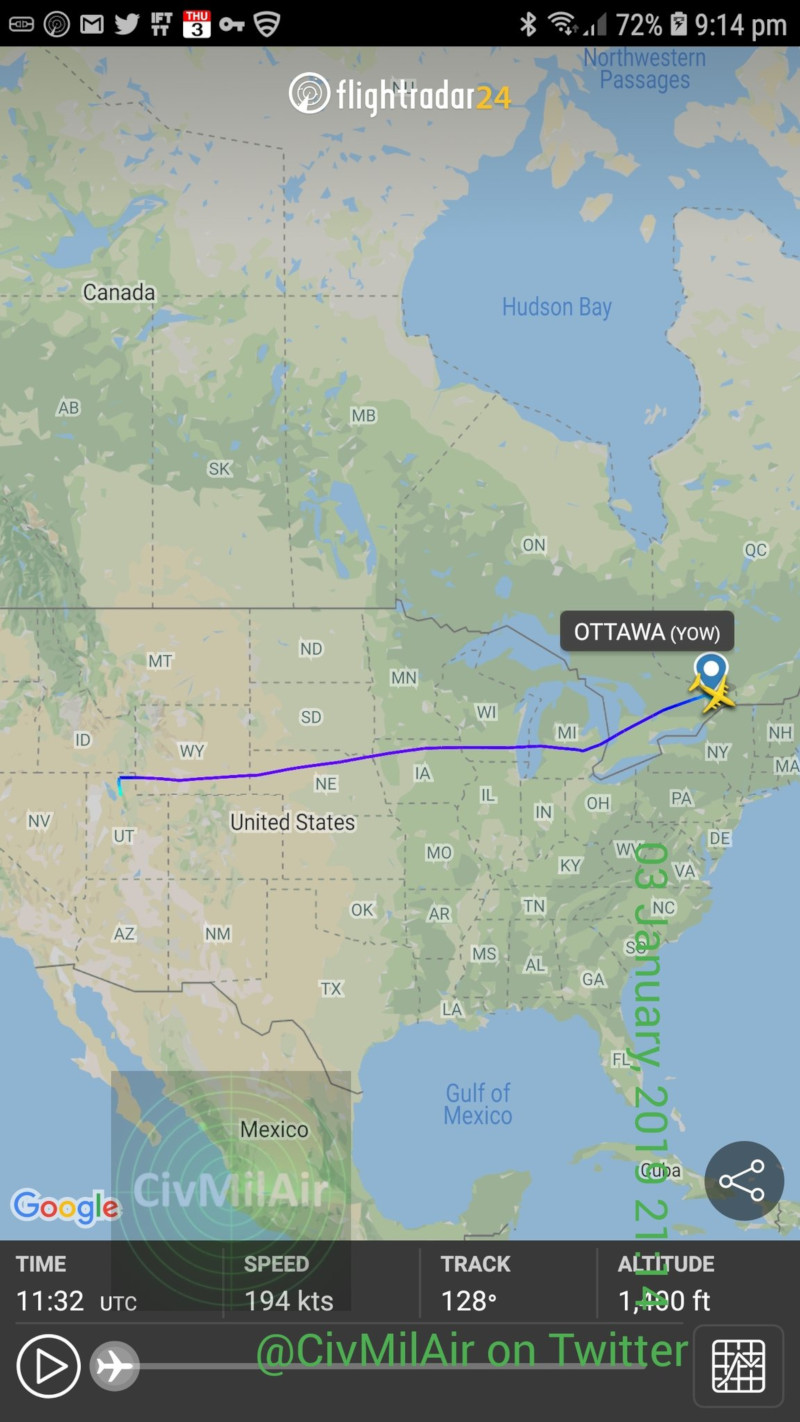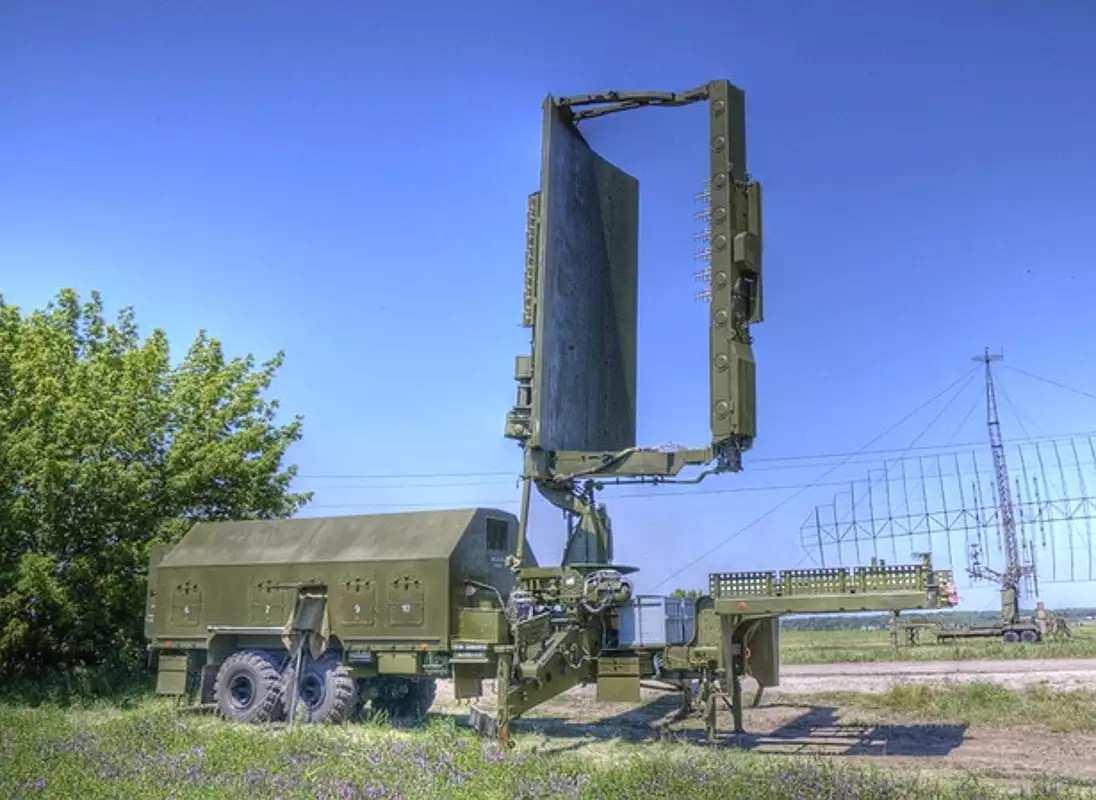A Ukranian Air Force Il-76 ‘Candid’ cargo plane has appeared at an Air National Guard facility attached to Salt Lake City International Airport. We now know that it has delivered an unspecified mobile radar system as part of a U.S. Air Force contract.
Online plane trackers first noticed the Il-76, of which the Ukrainian Air Force has around five in service in total, traveling westward from Ottawa/Macdonald–Cartier International Airport in eastern Canada on the morning of Dec. 3, 2019. The Candid was on the ground in Salt Lake City before 12:00 PM Eastern Standard Time.
Curiously, at the same time, information from our friend and intrepid plane tracker @CivMilAir indicated that the aircraft was showing up as 737 airliner with the registration UR-IVK, which belongs to Ukranian airline Dniproavia. But Dniproavia does not fly any routes to the United States at all and a 737 from that airline would be a very long way from home. @CivMilAir also noted that this could be an error with the tracking software or an issue with the aircraft’s transponder—one made by mistake or otherwise.



Then, at 4:00 PM EST, plane spotter Anthony Carpeneti posted a picture on Twitter confirming that the aircraft in question was indeed an Il-76 and was sitting at the Roland R. Wright Air National Guard Base, which is situated at the eastern side of Salt Lake City International Airport. This facility is home to the Utah Air National Guard’s 151st Air Refueling Wing, which operates KC-135R tankers.
The 151st is assisting with the “download of mobile radar asset under [a] contract managed by Hill Air Force Base,” U.S. Air Force Major Kevin Larsen, a spokesperson for the Utah Air National Guard, told The War Zone in an Email. We were then directed to reach out to Hill for further information, but, at the time of writing, the public affairs office there has not yet been able to respond to our queries.
It is not entirely clear why the Il-76 would deliver the radar to the airport in Salt Lake City rather than to Hill directly, which is situated less than 25 miles to the north. We also do not know whether the contract that calls for the radar involves work at that base itself. Contracting offices at Hill are known to manage projects at Air Force facilities elsewhere in the United States, including at the Nevada Test and Training Range (NTTR) and Tonopah Test Range (TTR), both situated in neighboring Nevada.
We also don’t know the specific reason why the Air Force has received this radar system by way of Ukraine. One possibility is that the Il-76 was simply returning a Joint Threat Emitter, a training system that can mimic various air defense threats that you can read about in more detail here, to the United States. The U.S. military often brings these systems to exercises and other events overseas, but often handles the shipping itself or through private contractors.
Based on what we know, it seems more likely that the Air Force has purchased or leased a radar from Ukraine for so-called “foreign materiel exploitation” (FME) purposes. The U.S. military is always looking to acquire “threat representative” systems to pick them apart and look for potential vulnerabilities, as well as seeing how threatening they might actually be to American forces while operating in real-world conditions.
Ukraine, a friendly former Soviet republic that still maintains and produces various Soviet-era systems, has become an increasingly valuable source for this type of equipment. In September 2018, the U.S. Army reportedly took delivery of another Ukrainian air defense radar, a 36D6M1-1, which is associated with the S-300 surface-to-air missile system.
Variants of the S-300 remain in service in Russia, as well as numerous other countries around the world, including other potential American opponents, such as Iran. The new Ukranian radar could also be similar, if not identical to a system still in widespread use.

If the radar does go to Hill, it would almost certainly find its way out onto the nearby Utah Test and Training Range (UTTR). It might also end up at the NTTR or TTR in Nevada or make appearances at various different sites, depending on the nature of the Air Force contract.
Regardless, the Air Force would be keen to fly various aircraft against it, including the stealthy F-35A Joint Strike Fighter. This gives the service an opportunity to see how well the radar can spot and track different targets. It also offers a chance to see how well the electronic warfare and other self-protection systems on any U.S. military aircraft handle the threat.
Hill, one of the Air Force’s premier F-35 bases, and the associated UTTR, would be a prime location to test out the radar and how the jets react to it. The Air Force, as well as other U.S. military services, might look to pit other types of non-stealth fighter jets, including those tasked with suppression or destruction of enemy air defenses (SEAD/DEAD), against the radar, too. It could be a valuable training target for electronic warfare, electronic intelligence, and potentially other manned or unmanned aircraft against the radar, as well.
Beyond that, foreign military systems can be a wealth of intelligence information broadly. As such, the demand for foreign military equipment to analyze is consistently high, regardless of how its obtained.
But, the U.S. military’s recent shift in focus toward potential “great power conflicts” with countries such as Russia or China under President Donald Trump has no doubt added to the desire to acquire analogs to equipment from those countries. It’s very possible that we could see similar deliveries from Ukraine in the near future, especially given Kiev’s own particularly cold relationship with the Kremlin.
In the meantime, we’re still working to get more details about this particular delivery and we’ll be sure to keep you updated as more information becomes available.
Contact the author: jtrevithickpr@gmail.com
